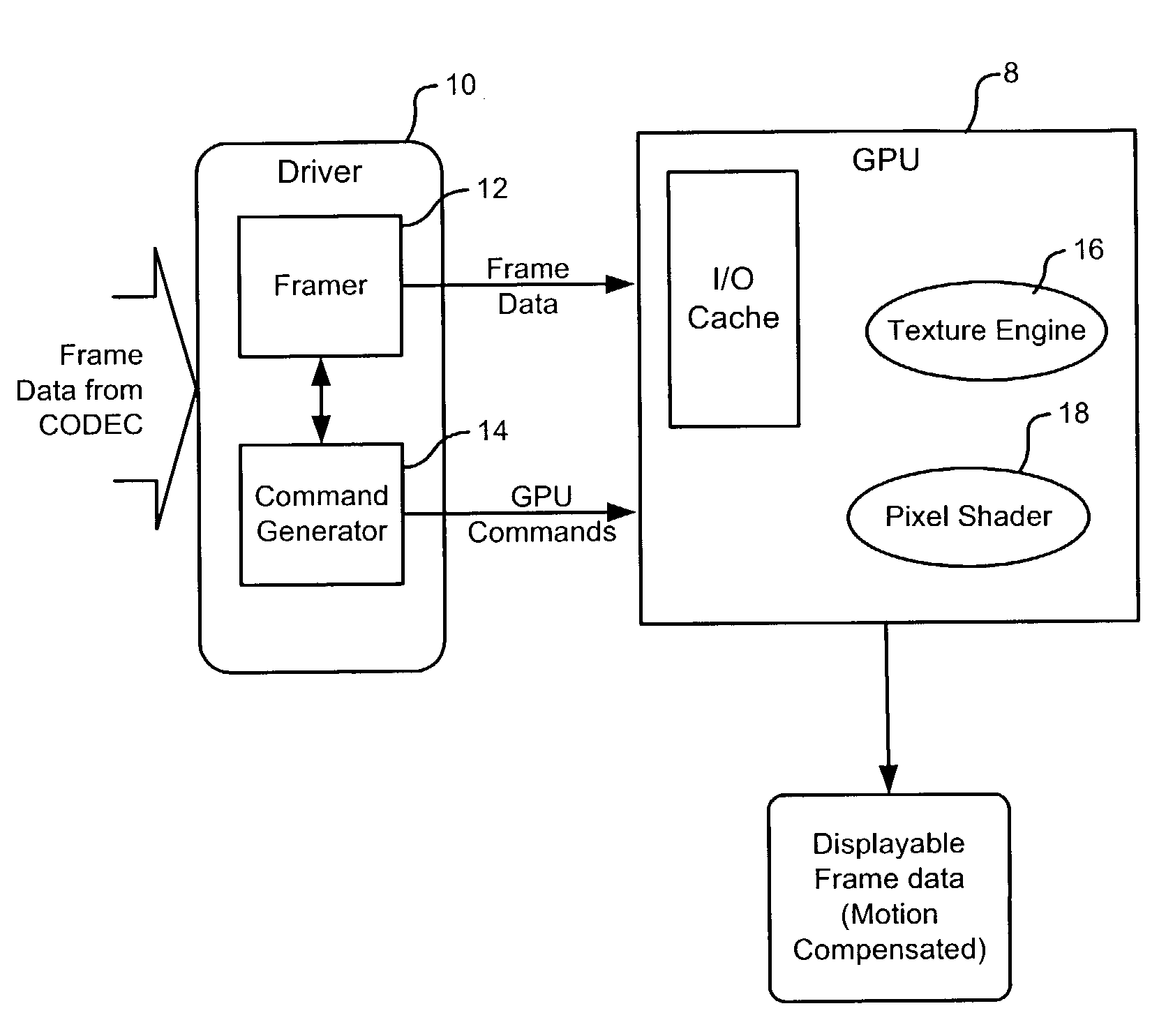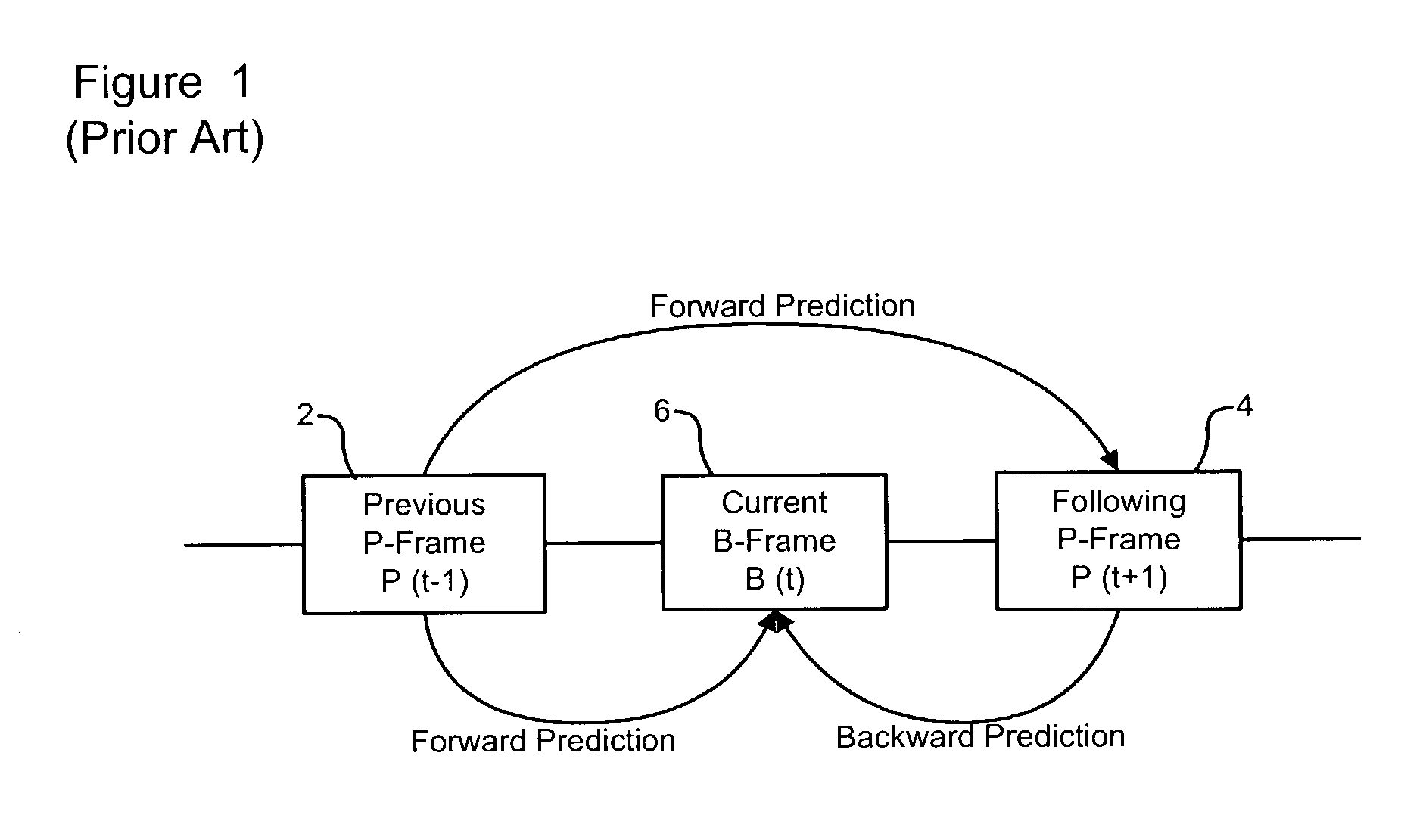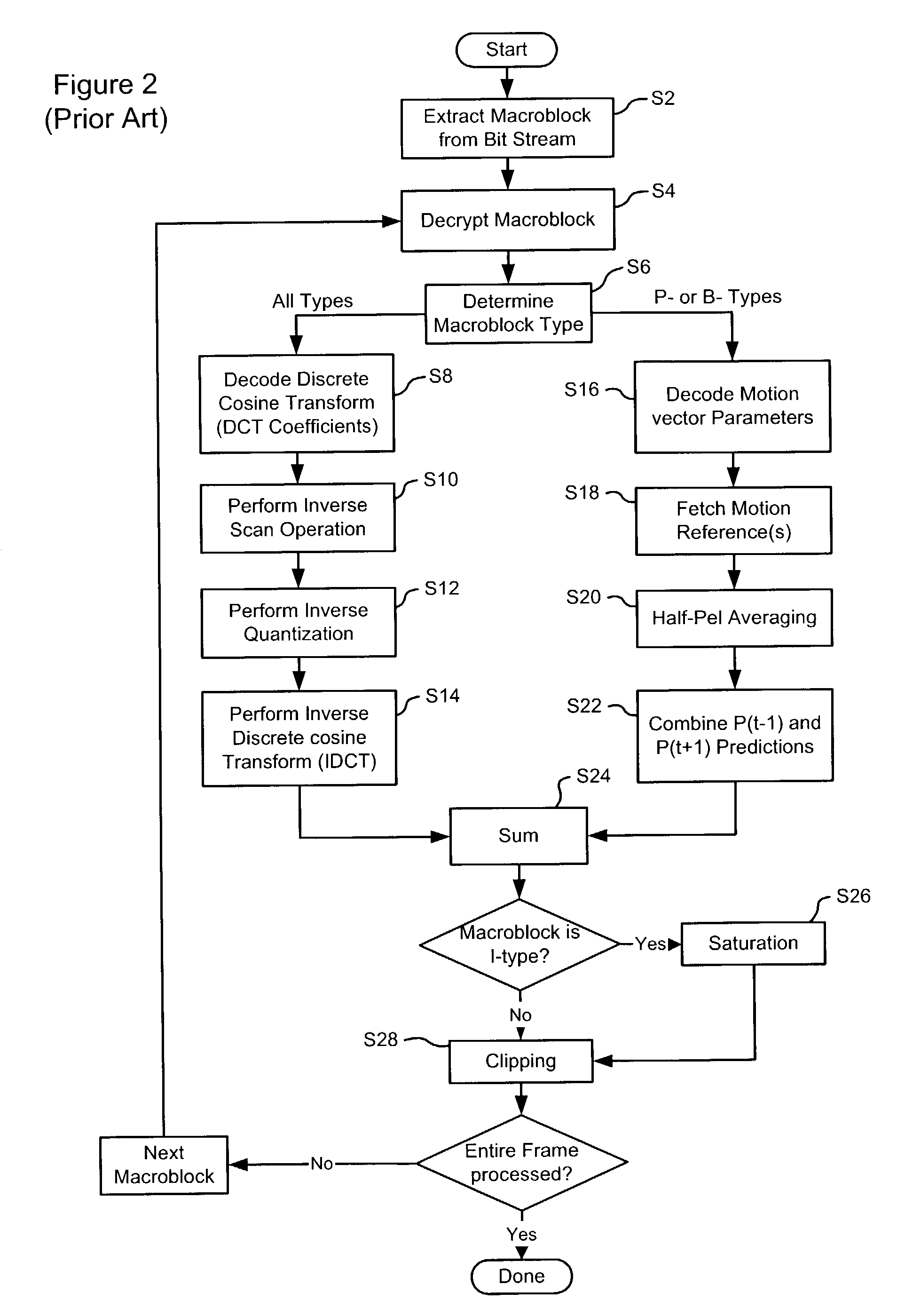Motion compensation using shared resources of a graphics processor unit
a technology of graphics processors and resources, applied in the field of motion compensation using shared resources of graphics processor units, can solve the problems of image quality suffer, image replication is not perfect, and detail loss
- Summary
- Abstract
- Description
- Claims
- Application Information
AI Technical Summary
Benefits of technology
Problems solved by technology
Method used
Image
Examples
Embodiment Construction
[0021]The present invention provides a method and system for performing motion compensation using shared resources of a graphics processor unit (GPU) of a digital image processing system. In order to facilitate understanding of the present invention, a description of conventional motion compensation in accordance with MPEG standards is presented below with reference to FIGS. 1 and 2.
[0022]As is well known in the art, three main types of frames are defined in the MPEG standard, namely: Intra coded frames (I-Frames); Predictive coded frames (P-Frames); and Bi-directionally predictive frames (B-Frames).
[0023]I-Frames are coded / decoded without reference to any other frame. This means that motion vectors do not play a role in the reconstruction of an I-Frame, which is accomplished solely on the basis of its IDCT data.
[0024]P-Frames are coded / decoded with reference to a previous frame. This means that IDCT data of the frame, in combination with motion vectors from a previous Intra or Pred...
PUM
 Login to View More
Login to View More Abstract
Description
Claims
Application Information
 Login to View More
Login to View More - R&D
- Intellectual Property
- Life Sciences
- Materials
- Tech Scout
- Unparalleled Data Quality
- Higher Quality Content
- 60% Fewer Hallucinations
Browse by: Latest US Patents, China's latest patents, Technical Efficacy Thesaurus, Application Domain, Technology Topic, Popular Technical Reports.
© 2025 PatSnap. All rights reserved.Legal|Privacy policy|Modern Slavery Act Transparency Statement|Sitemap|About US| Contact US: help@patsnap.com



